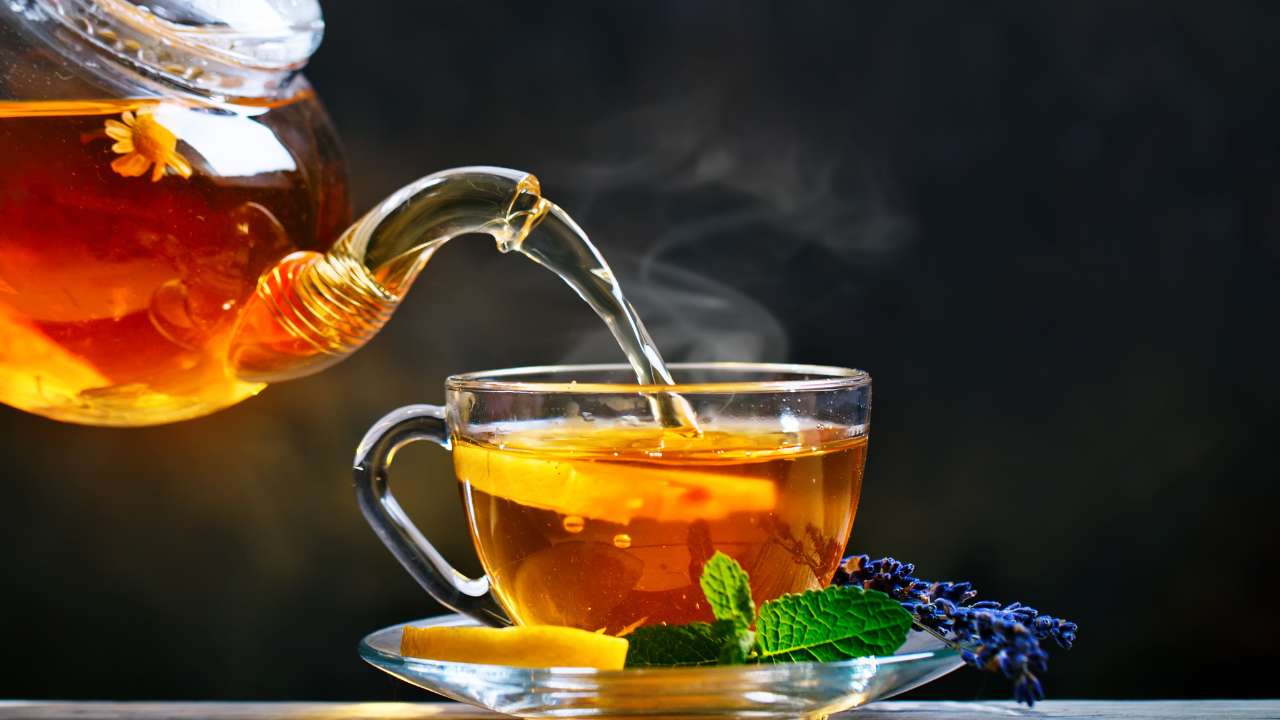Background
Black tea, green tea, and milk tea each offer distinct characteristics and appeal to different preferences. Black tea, known for its robust flavour and higher caffeine content, is often enjoyed with or without milk and sugar, providing a rich and bold taste experience. On the other hand, green tea is celebrated for its lighter, more delicate flavour and numerous health benefits, including high levels of antioxidants and moderate caffeine content. It is typically consumed plain or with a hint of honey or lemon. Milk tea, a versatile beverage that can be enjoyed hot or cold, combines tea with milk or a milk alternative, creating a creamy, soothing drink. Popular variations include chai, bubble tea, and Hong Kong-style milk tea, each bringing unique flavours and textures. While black tea and green tea are often appreciated for their individual health benefits and distinct tastes, milk tea’s versatility and comforting blend that can be tailored to personal preferences make it a popular choice worldwide.
Google Trends & Market Research
Google Trends is a robust and reliable tool for conducting online market research. It provides valuable insights into consumer behaviour, market demand, and emerging trends, making it an indispensable resource for businesses and researchers. Here’s how it can be effectively utilized:
Google Trends allows businesses and researchers to measure public interest in specific topics over time. By analyzing search volumes for particular keywords, companies can gauge consumer interest in their products or services. For instance, a study on psychological support services during the COVID-19 pandemic showed a significant increase in online searches for such services, indicating a shift in consumer preferences towards digital solutions during that period.
The data from Google Trends can serve as a leading indicator of market trends. For example, research has demonstrated that search data can predict fluctuations in the real estate market, helping investors make informed decisions based on anticipated demand. This predictive capability is particularly valuable for businesses looking to capitalize on emerging trends before they become mainstream.
Google Trends data can be stratified by geographic location, allowing businesses to identify regional variations in consumer interest. This can help tailor marketing strategies to specific demographics or locations. For example, the interest in online psychological support varied significantly across different regions during the pandemic, which could inform targeted marketing efforts.
By examining trends over time, businesses can identify seasonal patterns or shifts in consumer behaviour. For instance, a study on mortgage searches demonstrated how online search activity correlates with actual housing market transactions, highlighting the importance of timing in market strategies.
Understanding what consumers are searching for is crucial for businesses. It can guide content creation and search engine optimization (SEO) strategies, helping companies to improve their visibility and relevance in search results, and attract more potential customers. By aligning content with trending search terms, businesses can stay ahead of the curve and better cater to consumer needs.
Google Trends can help identify niche markets by revealing specific interests and search behaviours among different consumer segments. This segmentation allows for more personalized marketing approaches, enhancing engagement and conversion rates.
While Google Trends offers valuable insights, it is crucial to consider its limitations. The data reflects relative search interest rather than absolute numbers, sometimes leading to misinterpretations if not appropriately contextualised. Factors such as sampling errors can also affect the reliability of the insights drawn from this data. In conclusion, Google Trends is an invaluable resource for online market research, offering insights into consumer behaviour, market predictions, and regional preferences. By leveraging this tool, businesses can enhance their marketing strategies, optimize content, and make informed decisions based on real-time data.
Objective of the Study
The primary objective of this research is to conduct a comprehensive analysis and comparison of the monthly search volumes of three types of tea—Milk tea, Black tea, and Green tea—across various sub-regions of the Indian market from 2019 to June 2024. This analysis aims to identify and understand the evolving trends in consumer preferences and demand for these tea varieties. The insights derived from this research can be instrumental in informing effective marketing strategies and guiding product development within the tea industry.
Data & Methodology
Monthly search volume data for Milk tea, Black tea, and Green tea is collected using Google Trends, and segmented by different sub-regions within India to capture regional variations in consumer interest.
The analysis covers a period from January 2019 to June 2024, allowing for a comprehensive understanding of trends over time, including seasonal fluctuations and long-term shifts in consumer behaviour. The search volumes are also cross-compared across the three types of tea to identify which varieties are gaining or losing popularity in different regions. After that, A Query Map is developed using top queries associated with Milk tea, Black tea, and Green tea to identify trending topics, stay ahead of the competition, optimize content, target ads, avoid fading keywords, and brainstorm keywords.
Overall, the insights generated from this study can be used to understand consumer behaviour, market trends, potential opportunities and marketing strategies tailored to specific regional preferences. Furthermore, this structured approach will also ensure a thorough analysis of the tea market in India, leveraging the capabilities of Google Trends to provide actionable insights for stakeholders in the tea industry.
Search Trends: Black Tea vs Green Tea vs Milk Tea
Fig: 1
All three tea types (milk tea, black tea, and green tea) experienced a significant increase in search interest during the COVID-19 period. This surge could be attributed to an Increased focus on health and immunity, More time spent at home leads to greater interest in beverage options and the Potential perceived health benefits of tea for respiratory health. After reaching peak interest during the COVID-19 era, search volumes for Milk Tea and Black Tea remained elevated, staying above 60 (on a scale of 0-100) in the post-COVID era. This suggests a lasting change in consumer behaviour and interest. Uniquely among the three, green tea has seen a decline in search interest in recent years despite initially surging during the pandemic.
Green tea’s search popularity is consistently and significantly higher than both black tea and milk tea. This gap suggests that green tea occupies a distinct space in consumer minds, possibly associated with specific health benefits or weight loss properties. Black Tea and Milk Tea show similar search interest patterns, suggesting they might compete more directly for consumer attention. The recent higher interest in milk tea could indicate a shift towards more indulgent or flavoured tea options. When comparing all three types, the clear hierarchy in search popularity is: (a) Green Tea (significantly higher), (b) Milk Tea (c) Black Tea.
Fig: 2
The sustained high interest in green tea, coupled with its surge during COVID-19, underscores a continuing trend of health-conscious consumer behaviour. However, the recent decline in green tea searches might indicate market saturation or a shift in health trends. The resilience of milk tea and black tea searches post-COVID suggests that consumers are balancing health concerns with comfort and familiar flavours. The slight edge of milk tea over black tea in recent years might indicate a preference for more indulgent options. The rising popularity of milk tea could be linked to the global spread of Asian tea culture, particularly the bubble tea phenomenon.
To enhance the appeal of green tea, it is crucial to focus on reinforcing its health benefits and introducing new variants to reignite consumer interest. By emphasizing the well-known antioxidant properties and potential wellness advantages, stakeholders can attract health-conscious individuals. Additionally, unveiling innovative green tea blends or flavours can stimulate curiosity and encourage more frequent consumption.
For milk tea, it is essential to capitalize on its growing popularity by continually innovating with new flavours. Highlighting both the indulgent experience and the potential health benefits, such as the use of organic ingredients or reduced sugar options, can appeal to a broader audience. By offering unique and exciting taste profiles, stakeholders can maintain and expand milk tea’s loyal customer base.
When it comes to black tea, the strategy should involve showcasing its traditional benefits while also exploring new blends or preparation methods. By reminding consumers of black tea’s rich history and health advantages, stakeholders can uphold its classic appeal. At the same time, introducing creative blends or modern brewing techniques can help black tea compete with the rising popularity of milk tea, ensuring it remains a staple in the tea market.
The consistently high interest in green tea suggests an opportunity for black and milk tea brands to educate consumers about their respective health benefits, potentially closing the perception gap. The data indicates a market for hybrid products that combine the perceived health benefits of green tea with the indulgent flavours of milk tea, potentially capturing interest across categories.
Query Map: Black Tea vs Green Tea vs Milk Tea
Fig: 3
Black Tea
The top query “black tea benefits” (100) indicates a strong interest in the health aspects of black tea. This is further supported by searches for “tea benefits” (98) and “benefits of black tea” (33). There’s a notable interest in black tea for weight loss, with queries like “black tea weight loss” (35) and “black tea for weight loss” (25). Users frequently compare black tea with other popular beverages: Green tea (92), Black coffee (81), and Coffee (81). This suggests that consumers are weighing their beverage options and potentially considering switching between these drinks. Queries about preparation (“how to make tea” – 27) and variations (“lemon tea” – 33, “lemon black tea” – 33) indicate interest in different ways to enjoy black tea. Searches for “tea calories” (24) and “black tea calories” (23) suggest health-conscious consumers are considering the caloric impact of their tea consumption. The presence of “black tea in Hindi” (23) indicates interest from Hindi-speaking regions or cultural significance in those areas.
Milk Tea
The top queries in this category are overwhelmingly related to calorie content: “tea with milk calories” (100), “milk tea calories” (72), and “calories in milk tea” (49). This suggests that milk tea drinkers are particularly health-conscious and concerned about the caloric impact of their beverage choices. Users are seeking specific information about calorie content: “1 milk tea calories” (33), “1 cup milk tea calories” (26), “calories in milk tea with sugar” (24). This indicates a desire for precise nutritional information to make informed decisions. Searches for “tea with milk and sugar” (29) and related calorie queries show interest in how additional ingredients affect the nutritional profile. While less prominent than in the black tea category, there are still comparisons with other tea types, particularly green tea (27).
Green Tea
Similar to black tea, there’s a strong focus on health benefits: “green tea benefits” (100), “benefits of green tea” (32). Green tea is strongly associated with weight loss: “weight loss green tea” (48), “green tea for weight loss” (35). This suggests that green tea is perceived as a potential aid in weight management. Unlike the other categories, specific brands are mentioned: “lipton green tea” (52), “Lipton” (50) “ginger green tea” (16). This indicates brand recognition and possibly brand loyalty in the green tea market. Unique to green tea are queries related to beauty: “green tea mask” (27), “green tea for skin” (22). This suggests that green tea is perceived to have benefits beyond just consumption. Similar to black tea, there’s interest in preparation methods and variations: “how to make green tea” (17), “lemon green tea” (26)
Across all categories, there’s a clear trend of health-conscious consumers seeking information about benefits, calories, and weight loss potential. All three tea types show queries related to different preparation methods and flavour additions (like lemon), indicating consumer interest in versatility. The presence of Hindi-language queries in both black and green tea categories suggests significant interest from Hindi-speaking regions. Users often compare different types of teas and other caffeinated beverages, indicating that they’re making choices between these options.
Cross-Comparison of Regional Search Interest in India: Black Tea vs Green Tea vs Milk Tea
Fig:4
Green Tea vs. Black Tea
Green tea consistently dominates black tea in search interest across all regions. The preference for green tea over black tea is most pronounced in: Mizoram, Jharkhand, Bihar (91% vs. 9%), Delhi, Chandigarh, Gujarat, Uttar Pradesh, and Rajasthan (90% vs. 10%). Even in regions with the highest black tea interest, green tea still leads Kerala (79% vs. 21%), Sikkim, Goa, and Tamil Nadu (81% vs. 19%).
Green Tea vs. Milk Tea
Green tea generally maintains higher search interest compared to milk tea, but the gap is smaller than with black tea. Regions where green tea most strongly outperforms milk tea: Mizoram (83% vs. 9%) Andhra Pradesh, and Uttar Pradesh (80% vs 10-11%). Some regions show a preference for milk tea over green tea: Sikkim (21% green tea vs 79% milk tea), Goa, and Kerala (20% green tea vs 80% milk tea).
Black Tea vs. Milk Tea
Milk tea generally shows higher search interest than black tea across most of the regions. Exceptions where black tea leads: Nagaland (58% black tea vs 42% milk tea), Kerala (51% vs. 49%), Telangana (52% vs. 48%). Regions with the strongest preference for milk tea over black tea: Bihar (36% black tea vs 64% milk tea), Jharkhand (40% vs. 60%), Delhi, Chandigarh, Odisha (41% vs 59%)
Green Tea vs. Milk Tea vs. Black Tea
Green tea consistently leads in this comparison across all regions. The most balanced distribution is seen in the following: Kerala (66% green, 17% black, 17% milk), Sikkim (66% green, 16% black, 18% milk), Goa (67% green, 16% black, 17% milk). Regions with the strongest green tea dominance: Mizoram (83% green, 8% black, 9% milk), Andhra Pradesh (80% green, 10% black, 10% milk)
Overall Regional Insights
In the Northeastern States, there is a notable high interest in green tea across various comparisons, with Nagaland uniquely favoring black tea over milk tea. Sikkim demonstrates a more balanced preference among all three tea types. In Northern India, a strong preference for green tea is evident, particularly in urban areas like Delhi and Chandigarh, which share similar patterns likely influenced by their metropolitan nature. Southern India, particularly in Kerala and Tamil Nadu, showcases a more balanced interest across the different types of tea, although there is a slightly higher inclination towards black tea compared to other regions.
Western India presents a distinct picture, with Goa exhibiting a more balanced interest and a pronounced preference for milk tea. Conversely, Gujarat aligns more closely with Northern India’s strong preference for green tea. In Eastern India, states like Bihar and Jharkhand reflect a strong preference for green tea over black tea, while showing a higher interest in milk tea in direct comparisons. West Bengal and Assam reveal a moderate distribution of interest across the various tea types. Finally, Central India, represented by Madhya Pradesh and Chhattisgarh, generally conforms to national trends, albeit with less pronounced differences in preferences.
Implications and Opportunities
To effectively capitalize on the tea market across India, product development should focus on green tea variants and blends, given its consistent popularity nationwide. In regions like Kerala, Nagaland, and Telangana, where black tea has a stronger performance, developing specialty black teas could cater to local tastes. Additionally, innovating milk tea products for states that show a high preference for it, particularly in the Northeast and Goa, would help tap into existing consumer bases.
Marketing strategies should emphasize the health benefits of green tea in regions where it is overwhelmingly preferred, while also highlighting the cultural significance of black tea in areas with greater interest in that variety. In states where milk tea outperforms black tea, promoting it as a comfort beverage can enhance its appeal. Furthermore, regional customization is essential; tailoring tea offerings to match local preferences, especially in states with more balanced interests, will foster deeper connections with consumers. Seasonal variations in tea preferences should also be considered for targeted marketing campaigns.
Education and awareness initiatives can play a pivotal role in introducing diverse tea options in regions with a strong preference for a single type. By informing consumers about the unique benefits of each tea type, brands can broaden their appeal and encourage exploration. E-commerce and distribution strategies must be adjusted to reflect regional preferences, with online and in-store inventories tailored accordingly. Developing region-specific tea subscription boxes or sampler packs can enhance consumer engagement.
Lastly, aligning tea offerings in hotels and restaurants with regional preferences is vital for the tourism and hospitality sector. Creating tea tourism experiences in regions with diverse tea interests, such as Sikkim and Goa, can attract visitors and enhance their appreciation of local tea cultures.
Conclusion
In conclusion, the search trends for different types of tea reflect a dynamic market influenced by global events, health trends, and changing consumer preferences. Green tea remains the most searched option, likely due to its health associations, while the resilience and growth of milk tea searches highlight a market that values both health and indulgence. Although black tea slightly lags behind green tea and milk tea, it remains a significant player in the market. Moving forward, tea brands and marketers should consider these trends to tailor their products and messaging to meet evolving consumer interests and needs.
The tea market is driven by health-conscious consumers actively seeking information about the benefits, calorie content, and weight loss potential of different tea types, with a particular emphasis on green tea for its perceived health and beauty benefits. This data suggests opportunities for tea brands to cater to specific consumer interests, such as low-calorie options, weight-loss teas, and beauty-enhancing products.
The cross-comparison analysis reveals a complex landscape of tea preferences across India, with green tea showing strong popularity nationwide but significant regional variations in the relative popularity of black tea and milk tea. These insights can guide tea industry stakeholders in developing targeted strategies for product development, marketing, and distribution. The data also highlights opportunities for educating consumers and expanding market share for different tea types across regions. By leveraging these insights, the tea industry in India can cater to existing preferences while introducing new tea experiences to consumers, potentially reshaping the tea consumption landscape in various regions over time.
References
- Google Trends. (n.d.). Trends. https://trends.google.com/trends/
- Google Trends: What It Is & How to Use it. (n.d.). Glimpse. https://meetglimpse.com/google-trends/
- Howarth, J. (2024, October 1). How to use Google Trends for market research (2024). Exploding Topics. https://explodingtopics.com/blog/google-trends-market-research
- Think with Google: Marketing Research & Digital Trends. (n.d.). Think With Google. https://www.thinkwithgoogle.com/intl/en-apac/
- Google Trends for marketers in a dynamic environment – Google Ads Help. (n.d.). https://support.google.com/google-ads/answer/9817630?hl=en
- Pan, Z., Nguyen, H. L., Abu-Gellban, H., & Zhang, Y. (2020). Google Trends Analysis of COVID-19 Pandemic. IEEE. https://doi.org/10.1109/bigdata50022.2020.9377852
- Jun, S., Yoo, H. S., & Choi, S. (2017). Ten years of research change using Google Trends: From the perspective of big data utilizations and applications. Technological Forecasting and Social Change, 130, 69–87. https://doi.org/10.1016/j.techfore.2017.11.009
-
Silva, E., Hassani, H., Madsen, D., & Gee, L. (2019). Googling Fashion: Forecasting Fashion Consumer Behaviour Using Google Trends. Social Sciences, 8(4), 111. https://doi.org/10.3390/socsci8040111
About Author:
Pankaj Chowdhury is a former Research Assistant at the International Economic Association. He holds a Master’s degree in Demography & Biostatistics from the International Institute for Population Sciences and a Bachelor’s degree in Statistics from Visva-Bharati University. His primary research interests focus on exploring new dimensions of in computational social science and digital demography.
Akash Dey is a former Sales Executive at Alpine Health. He holds a Bachelor of Business Administration (BBA) from B.P. Poddar Institute of Management and Technology. His key areas of expertise include Decision-Making, Communication, Market Research, Product Marketing, Business Development, and Marketing Strategy.
Disclaimer: The views expressed in this article are those of the author and do not necessarily reflect the views of 360 Analytika.
Acknowledgement: The author extends his gratitude to Google Trends for providing data support.
This article is posted by Sahil Shekh, Editor-in-Chief at 360 Analytika.







